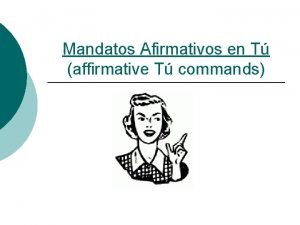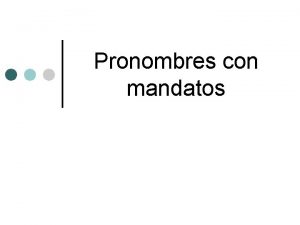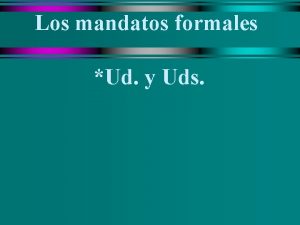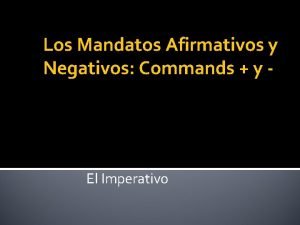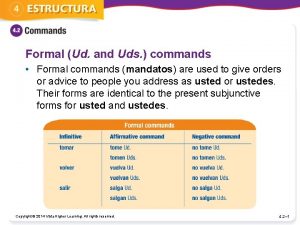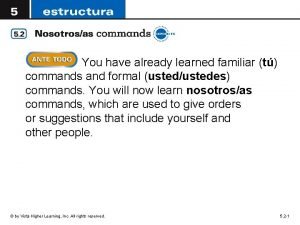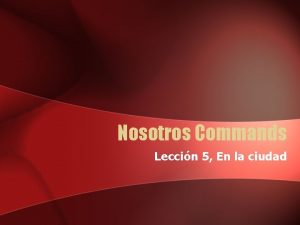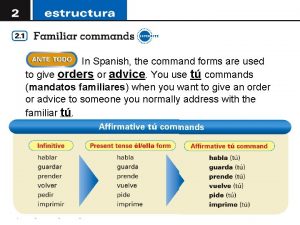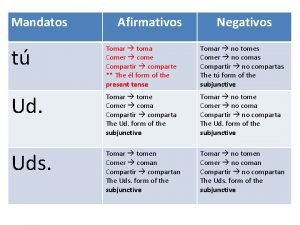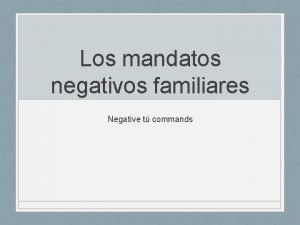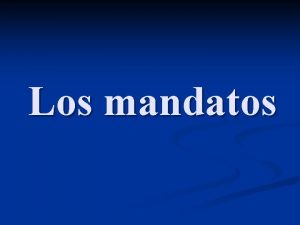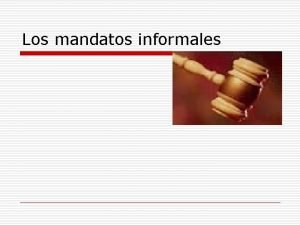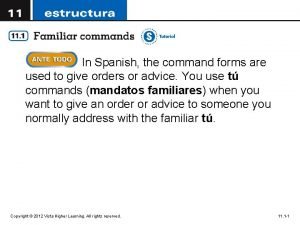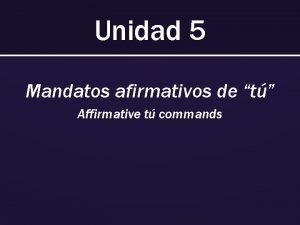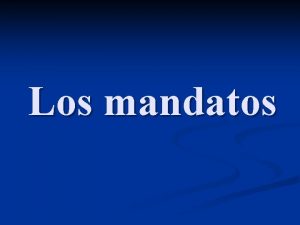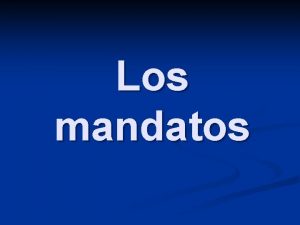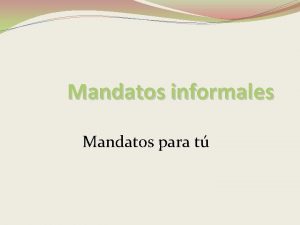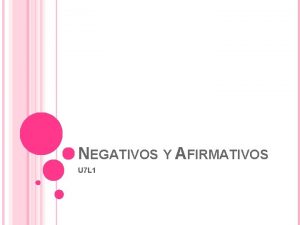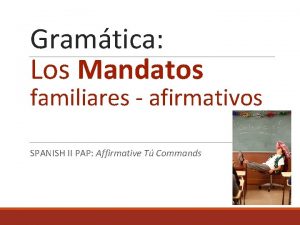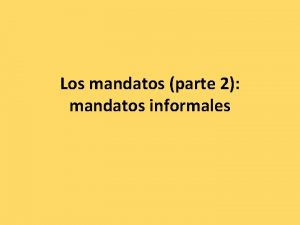Los mandatos Los mandatos afirmativos con t Cmo
















- Slides: 16

Los mandatos

Los mandatos afirmativos con tú ¿Cómo se forman? Habla español en la clase, por favor. Aprende los verbos. Sirve la sopa en seguida. Use third person singular (él, ella, Ud. ) of the present tense.

Los mandatos afirmativos con tú Los irregulares ¿Hay irregulares? decir di salir sal hacer haz ser sé ir ve tener ten venir ven poner pon ¡Ojo! ¿Por qué lleva acento?

Traduce: Make me a sandwich, please. Hazme un sándwich, por favor. This is a stick-up. Give me all your money. Este es un robo. Dame todo tu dinero. Be quiet! ¡Cállate!

Los mandatos negativos con tú ¿Cómo se forman? Go to the “yo” Drop the “O” habl es o Add the opposite ending

Los mandatos negativos con tú tú tener no tengas decir no digas tomar no tomes pedir no pidas servir no sirvas poner no pongas cerrar no cierres

Verbos con -car, -gar, -zar tú tocar no toques llegar no llegues empezar no empieces

Verbos irregulares tú dar no des estar no estés ir no vayas ser no seas

Los pronombres For AFIRMATIVE commands, the pronoun is always placed after the command. tú escribirlo escríbelo ¡Ojo! levantarse levántate verbos reflexivos cepillarse cepíllate vestirse vístete

Los pronombres For NEGATIVE commands, the pronoun is always placed before the command. levantarse no te levantes cepillarse no te cepilles vestirse no te vistas escribirlo no lo escribas

Los mandatos negativos tú hablar habla no hables beber bebe no bebas decir di no digas poner pon no pongas tener ten no tengas

Los mandatos con Ud. /Uds. ¿Cómo se forman? Go to the “yo” Drop the “O” habl e o habl oen Add the opposite ending

Los mandatos con Ud. y Uds. Ud. Uds. hablar hable no hablen beber beba no beban escribir escriba no escriban decir diga no digan poner ponga no pongan tener tenga no tengan hacer haga no hagan

Mandatos afirmativos tú – lavarse lávate Ud. - vestirse vístase Uds. – quedarse quédense tú – picarlo pícalo Ud. – apagarla apáguela Uds. - añadirlos añádanlos

Mandatos negativos tú – lavarse No te laves Ud. - vestirse No se viste Uds. – quedarse No se queden tú – picarlo No lo picques Ud. – apagarla No la apague Uds. – añadirlos No los añadas

el fin
 Affirmative formal command
Affirmative formal command Informal mandates spanish
Informal mandates spanish Afirmativos y negativos
Afirmativos y negativos Mandatos formales negativos
Mandatos formales negativos Mandatos afirmativos y negativos con ud. y uds
Mandatos afirmativos y negativos con ud. y uds Realidades 2 capitulo 3b ahora mismo
Realidades 2 capitulo 3b ahora mismo Formal mandatos
Formal mandatos Indica los mandatos afirmativos y negativos de estos verbos
Indica los mandatos afirmativos y negativos de estos verbos Intentalo indica los mandatos afirmativos y negativos
Intentalo indica los mandatos afirmativos y negativos Mandatos positivos y negativos
Mandatos positivos y negativos Indica los mandatos afirmativos y negativos
Indica los mandatos afirmativos y negativos Comer mandatos formales
Comer mandatos formales Mandatos negativos
Mandatos negativos Los mandatos familiares afirmativos y negativos
Los mandatos familiares afirmativos y negativos Mandatos en espanol
Mandatos en espanol Indica los mandatos afirmativos y negativos de estos verbos
Indica los mandatos afirmativos y negativos de estos verbos Mandatos afirmativos irregulares
Mandatos afirmativos irregulares
